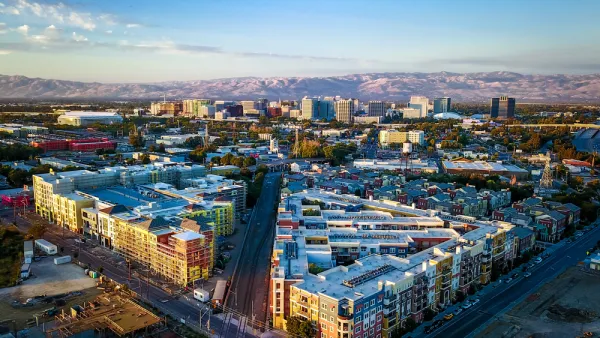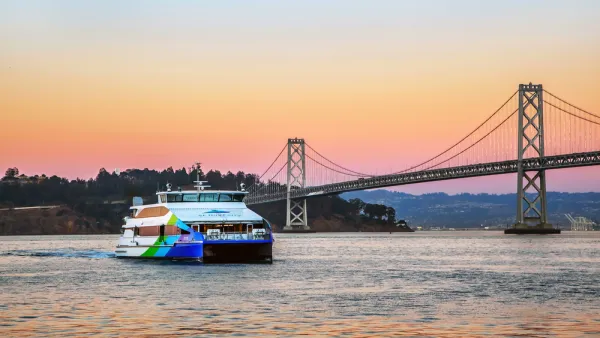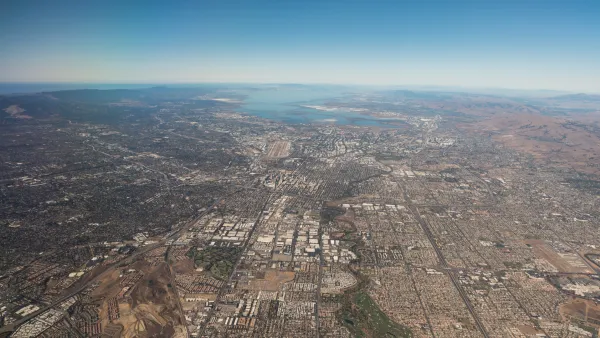You wouldn't be alone if you thought the tech industry had shifted its base of operations from the Silicon Valley to San Francisco. A new study of the tech industry's real estate footprint, however, reveals the South Bay's entrenched dominance.
Nathan Donato-Weinstein shares news of a new study by CBRE that "quantifies the Bay Area's tech footprint by industry subsector, revealing a number of interesting takeaways about site-selection trends, the state of the market and what risks might lie ahead for the regions' economies."
A key takeaway from the report: the commercial real estate market does not conform to the popular narrative about San Francisco emerging as a rival to the Silicon Valley's dominance as the geographic center of the tech industry. Donato-Weinstein explains:
While tech has certainly expanded in San Francisco ( hello, Salesforce Tower), the narrative may be overblown. In fact, the broader industry has continued to grow in its traditional South Bay stronghold. About 73 percent of all of the Bay Area's tech-occupied real estate is located in Silicon Valley, compared to 13 percent in San Francisco, 9 percent on the Peninsula and 5 percent in the East Bay.
Not only is the Silicon Valley home to the most tech companies, it leads the Bay Area in density of tech companies:
The report found that Silicon Valley remains the most dense tech market in the Bay Area, with 2,400 companies occupying 52 percent of the Valley's entire real estate footprint, or 126.4 million square feet of space. That compares to San Francisco's 1,800 tech companies occupying 22.4 million square feet of space, or 29 percent of all space. The Peninsula's 400 tech firms take up about 14.9 million square feet, also about 29 percent of the total office and R&D real estate. And Oakland's 700 tech firms occupy 8.6 million square feet, or 8 percent.
The article also considers some of the policies that are contributing to the Silicon Valley's dominance in the tech industry, relative to the rest of the Bay Area, along with more details from the study's findings.
FULL STORY: CBRE study quantifies tech's footprint around the Bay

National Parks Layoffs Will Cause Communities to Lose Billions
Thousands of essential park workers were laid off this week, just before the busy spring break season.

Retro-silient?: America’s First “Eco-burb,” The Woodlands Turns 50
A master-planned community north of Houston offers lessons on green infrastructure and resilient design, but falls short of its founder’s lofty affordability and walkability goals.

Delivering for America Plan Will Downgrade Mail Service in at Least 49.5 Percent of Zip Codes
Republican and Democrat lawmakers criticize the plan for its disproportionate negative impact on rural communities.

Test News Post 1
This is a summary

Test News Headline 46
Test for the image on the front page.

Balancing Bombs and Butterflies: How the National Guard Protects a Rare Species
The National Guard at Fort Indiantown Gap uses GIS technology and land management strategies to balance military training with conservation efforts, ensuring the survival of the rare eastern regal fritillary butterfly.
Urban Design for Planners 1: Software Tools
This six-course series explores essential urban design concepts using open source software and equips planners with the tools they need to participate fully in the urban design process.
Planning for Universal Design
Learn the tools for implementing Universal Design in planning regulations.
EMC Planning Group, Inc.
Planetizen
Planetizen
Mpact (formerly Rail~Volution)
Great Falls Development Authority, Inc.
HUDs Office of Policy Development and Research
NYU Wagner Graduate School of Public Service





























